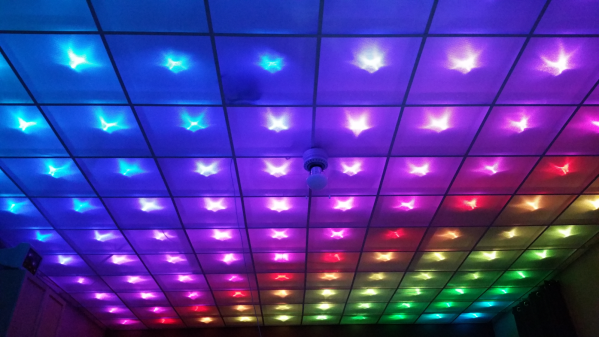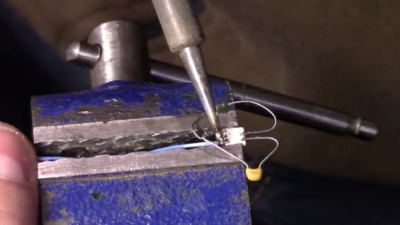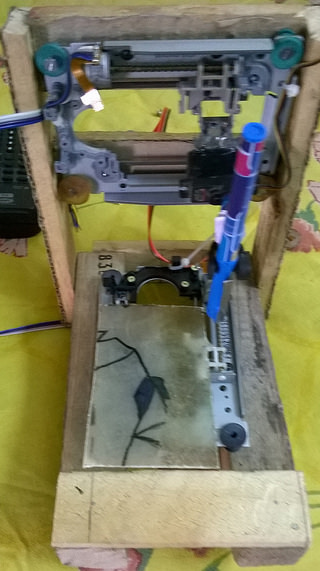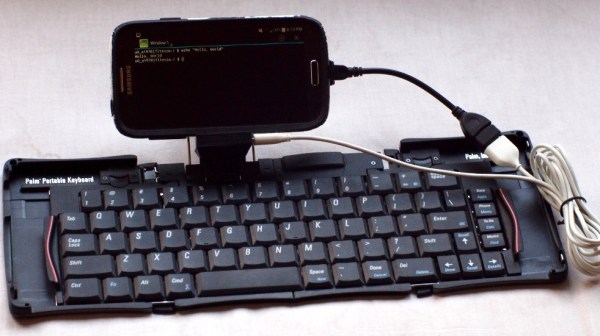Need a good excuse to duck out on the family over the holidays and spend a few hours in your shop? [Jens] has just the thing. He built a color-mixing toy that looks great and we’d bet you have everything on-hand necessary to build your own version.
The body of the toy is an old router case. Who doesn’t have a couple might-be-broken-but-I-kept-it-anyway routers sitting around? Spray painted red, it looks fantastic! The plastic shell hosts 6 RGB LEDs, 3 toggle switches, and 2 buttons. [Jens] demonstrates the different features in the demo video below. They include a mode to teach counting in Binary, color mixing using the color knobs, and a few others.
Everything is driven by an Arduino Pro Mini. The lights are APA106 LEDs; a 4-pin through-hole package version of the WS2812 pixels. You could easily substitute these for the surface mount varieties if you just hot glue them to the underside of the holes in the panel. We’d love to see some alternate arrangements for LEDs and a couple more push buttons for DIY Simon Says.
Continue reading “Build Some Entertainment For Young Holiday Guests”



 Disco Floor’s are passé. [dennis1a4] turned them upside down and built an awesome
Disco Floor’s are passé. [dennis1a4] turned them upside down and built an awesome  The hard part was wiring up all of the 160 LED pixels. Instead of mounting the 5050 SMD LED’s on PCBs, [dennis1a4] wired them all up “dead bug” style. Each pixel has one LED, a 100nF decoupling capacitor, and 91 ohm resistors in series with the Data In and Data Out pins – these apparently help prevent ‘ringing’ on the data bus. Check the video for his radical soldering method. Each SMD LED was clamped in a machine shop vice, and the other three parts with their leads preformed were soldered directly to the LED pins.
The hard part was wiring up all of the 160 LED pixels. Instead of mounting the 5050 SMD LED’s on PCBs, [dennis1a4] wired them all up “dead bug” style. Each pixel has one LED, a 100nF decoupling capacitor, and 91 ohm resistors in series with the Data In and Data Out pins – these apparently help prevent ‘ringing’ on the data bus. Check the video for his radical soldering method. Each SMD LED was clamped in a machine shop vice, and the other three parts with their leads preformed were soldered directly to the LED pins.














